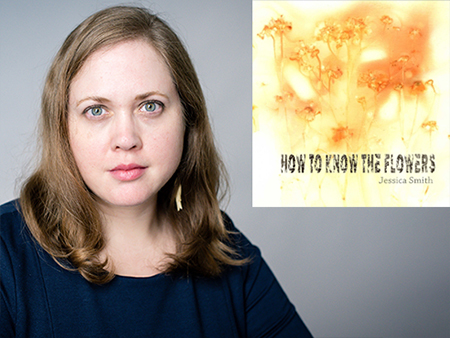Media contact: Yvonne Taunton
 Jessica Smith has been a poet since childhood. Smith, an instructor in the University of Alabama at Birmingham Department of English, says she was already writing short stories at a young age and was inspired by a book of poetry, given to her by her grandfather, to start writing in verse.
Jessica Smith has been a poet since childhood. Smith, an instructor in the University of Alabama at Birmingham Department of English, says she was already writing short stories at a young age and was inspired by a book of poetry, given to her by her grandfather, to start writing in verse.
“I realized poetry was really challenging,” Smith said. “I was interested to continue exploring that. I’m still interested, and it still challenges me.”
Smith’s newest book of poetry, “How To Know the Flowers,” published by Veliz Books, is an exploration of challenges. She began writing as she was leaving her job at Birmingham’s Indian Springs School, where she instructed a class on wilderness literature and taught students to incorporate the scientific names of local flora into their work. But, as often happens to writers, Smith ran into writer’s block.
To combat it, Smith began to learn about dyeing using natural indigo. In picking and boiling flowers to use as dye with her 8-year-old son, Smith had a breakthrough: She found Coreopsis tincturia, a flower commonly known as tickseed, which produces a real, quality dye. A print of it adorns the cover of “How To Know the Flowers.”
While Smith was learning to dye and recovering from her grief from major life changes, one of her former students, by then an adult, moved in with Smith to help out. Together, she says, the pair rebuilt their senses of trust and care. From those experiences — the leaving, the learning, the dyeing, the friendship-forming — came “How To Know the Flowers.”
Smith wanted to depict the process of healing realistically; she says the more realistic experience is that “people just keep going.”
“How To Know the Flowers” is a book for people who have experienced grief or trauma or who know someone who has, she explains.
“Grief and trauma: They can get better. But it still happened, you still have to integrate it,” she said. “You can’t just erase it. There’s not always a happy ending that comes after a period of grief. But there are ways to continue to do work and make beautiful things even during grief.”